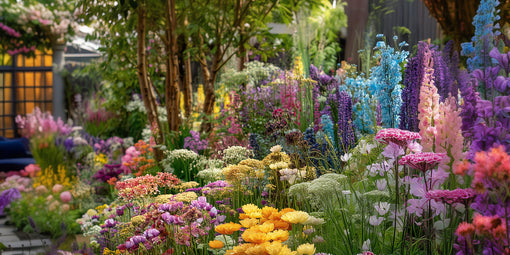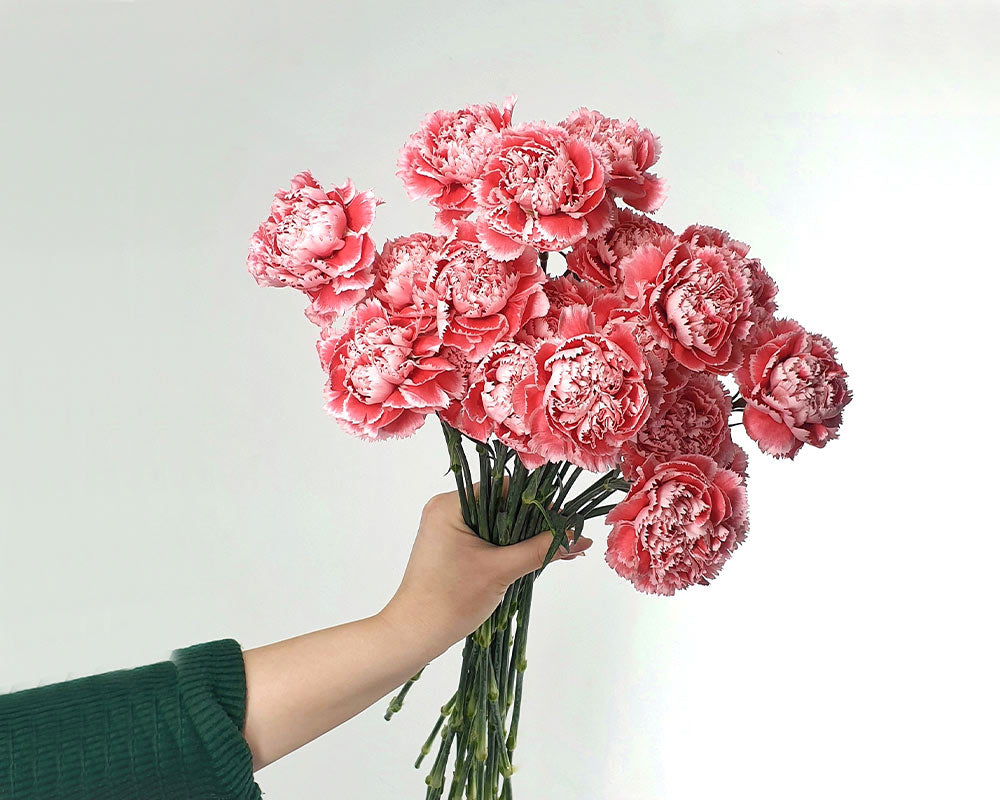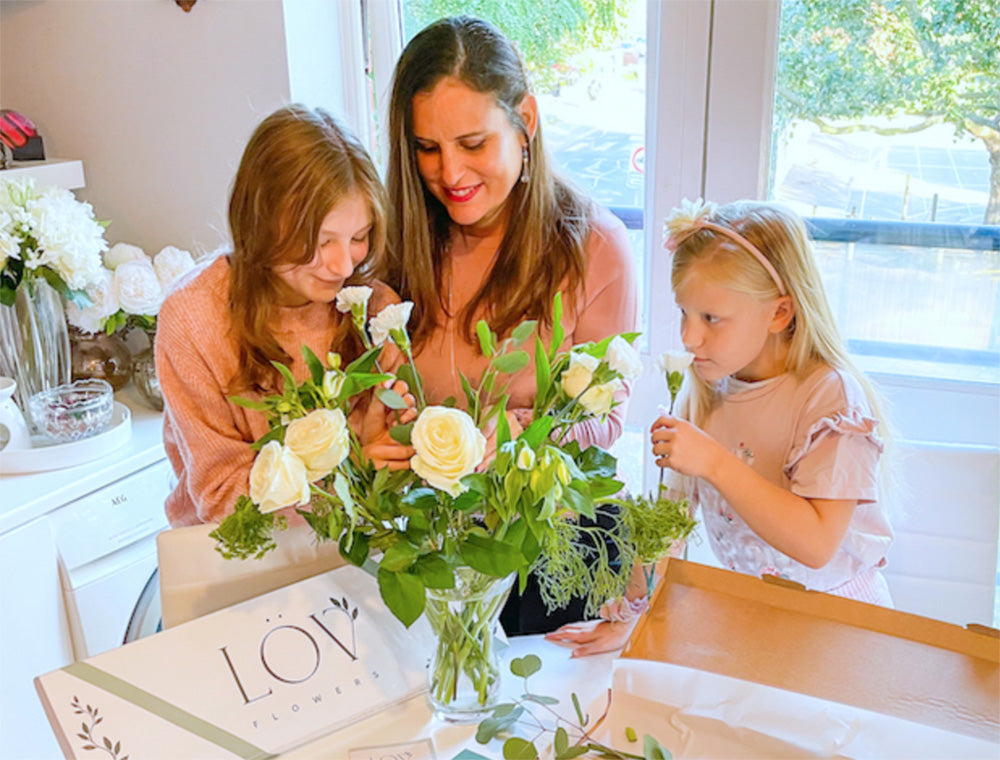
- Article published at:
Drawer menu

One of the hardest subjects to photograph is flowers. To translate the vibrant colours, delicate textures and romantic shapes onto a static picture can be a very tricky thing.
Us, florists, are well aware of this. So, we're breaking it down into ten easy steps so you can capture your glossy blooms forever.

We can’t stress enough how important this first step is. Lighting is paramount when photographing flowers. Preferably, you want soft and natural daylight. For example, an overcast day is actually flattering for flowers!
Overly bright light or fluorescent bulbs can cause harsh shadows and overexposed highlights which are not great for enhancing the colours of the flowers. If you experience strong light through your window, hang a sheer or lace curtain in front of it.

Empty the space around your bouquet and make sure that your background is clear of clutter, so you have all the focus on your flowers.
Using an unconventional perspective can create an interesting shot. Photos taken from a lower angle will make your bouquet appear bigger, whereas, a photo taken from a higher angle looks into the heart of the flowers.
This is the golden rule for composition! Align your objects of focus along the lines of thirds. Keeping things off-centre along the vertical or horizontal lines of thirds will really make your picture pop! Read more on how to arrange your flowers here.

The secret to making your snaps stand out amongst thousands of images on Instagram is to tell a memorable story with your flowers.
Giving your floral photo context makes it unique. A child arranging flowers, or a bouquet on the breakfast table – images are a great storytelling tool!
We are all guilty of being a bit impatient and snapping a quick picture while holding the phone with one hand.
However, by holding your phone steady, with two hands, you can increase the quality of your photos. Steady hands are important to avoid blurring.

A floral close-up is sometimes needed to show off just how beautiful a mix of flowers really is. However, try not to use the zoom feature on your phone as this can reduce the quality of the image.
To retain the quality of your image, crop with your phone’s built-in editor tool once you’ve taken it. Top tip when posting: Save the un-cropped picture, and post both the cropped and the un-cropped picture together in one post on Instagram.
Wait a couple of days before taking pictures of your flowers to make sure they are in full bloom and ready for their close-up. There is no point taking pictures of flowers that are still in bud, so be patient.
Natural looking images are by far the best images so #nofilter, a little enhancing however is the way to go. Most mobile phones nowadays come with built-in editing. Alternatively, adjust your image directly in Instagram or try a free editing tool.
Adjusting the brightness levels to make it look sunnier can light an image and really make it pop, as well as raising the exposure levels slightly. Keep in mind not to wash out the colours too much.
Upping the contrast is great to get more definition on your flowers, but keep in mind that overdoing this can makes the picture look harsh.
By increasing the saturation, you increase the vibrancy of the colours in your bouquet. Keep it looking natural, though! You don’t want your flowers to look fake.
Now it’s time to put your floral photographer skills to the test! Share your pictures with us on Facebook or Instagram using the hashtag #lovflowers.